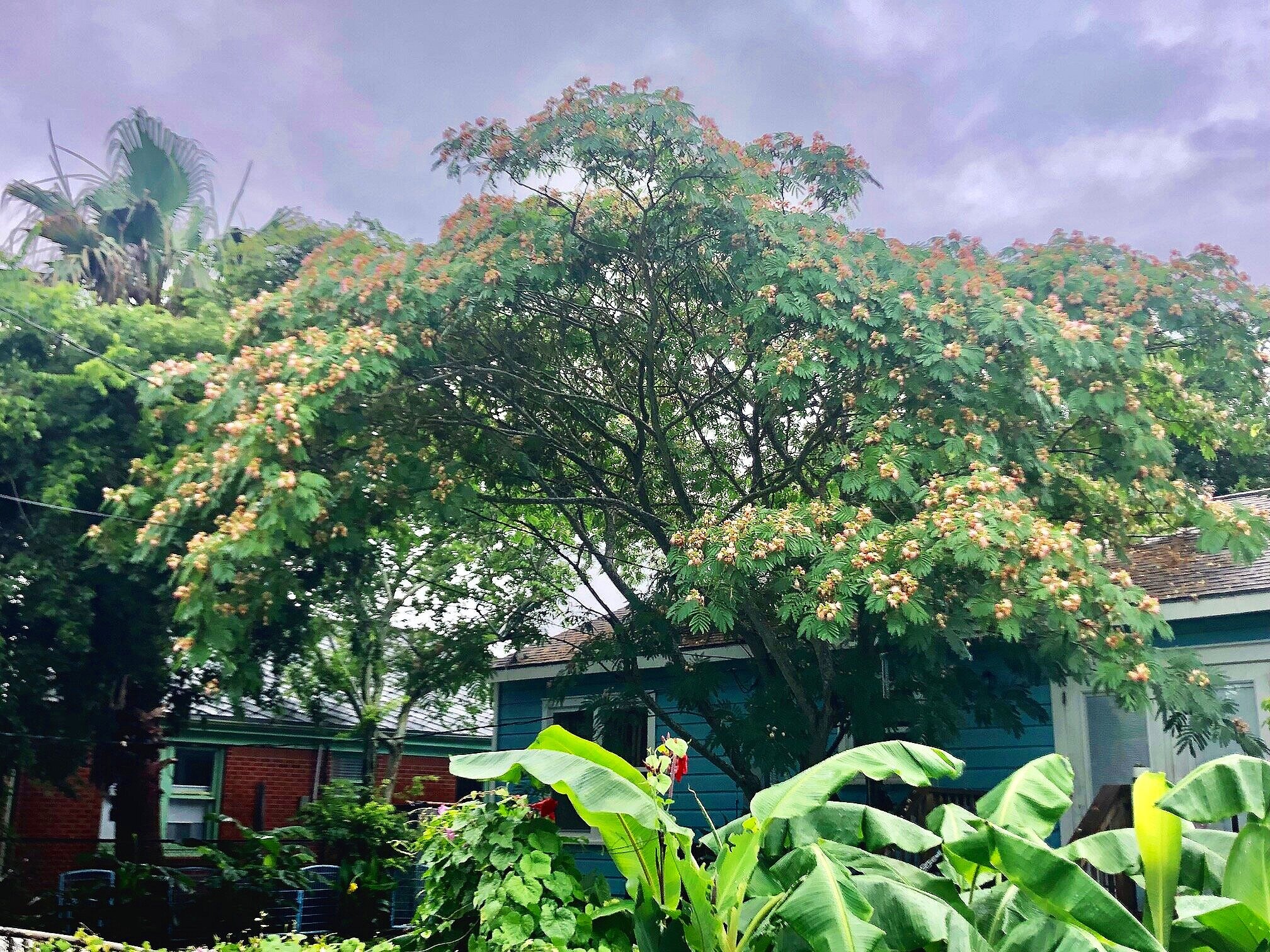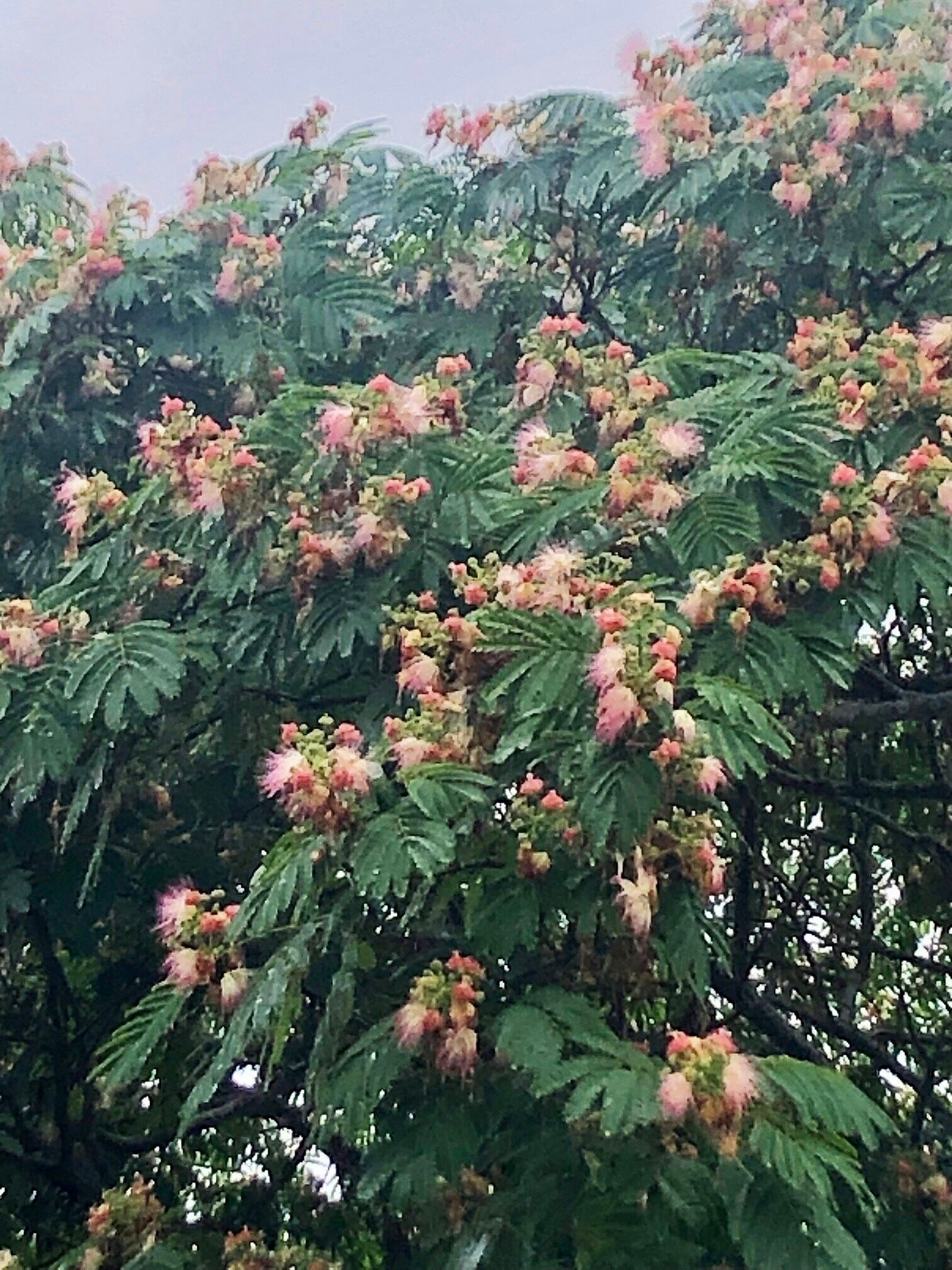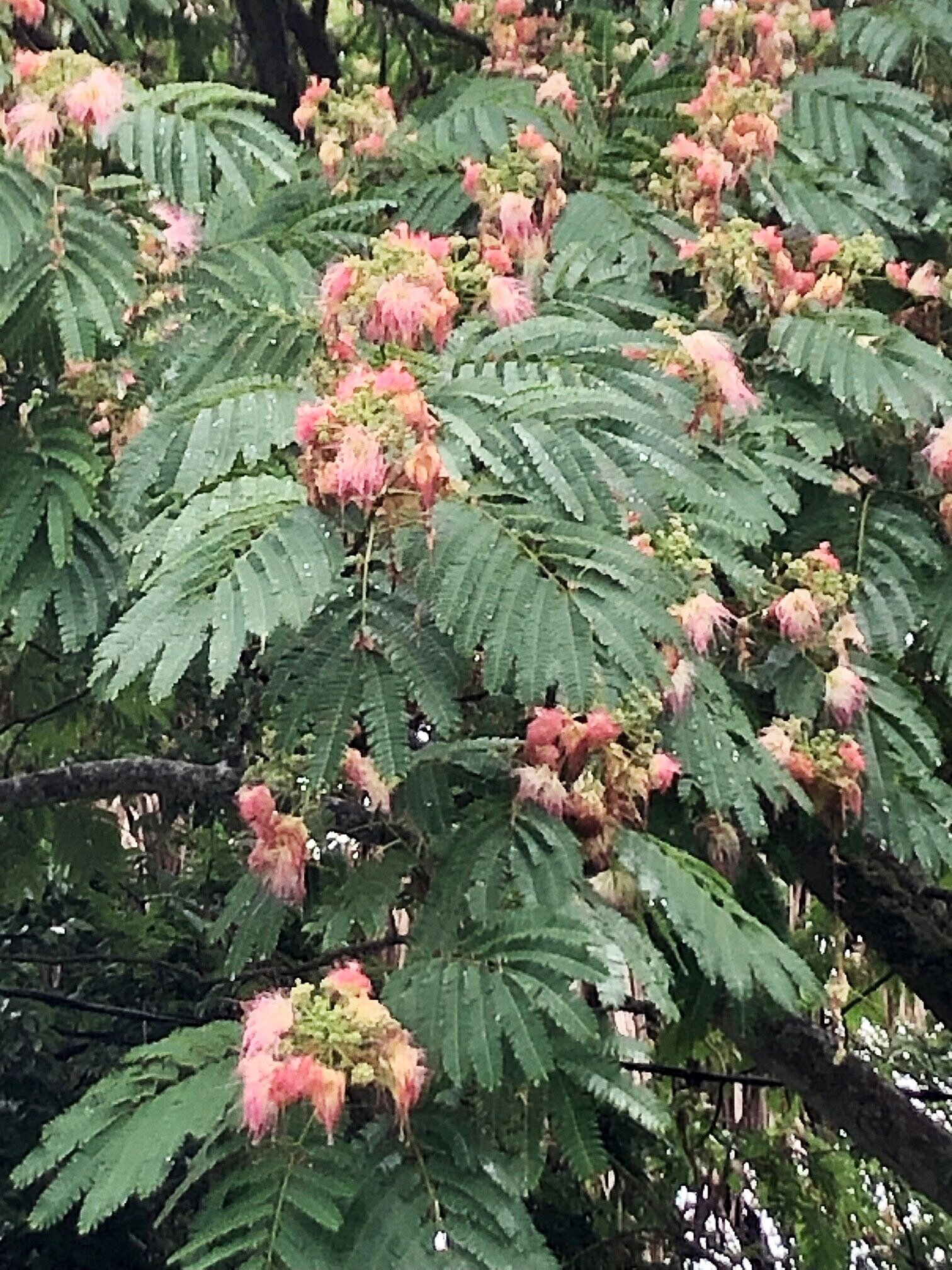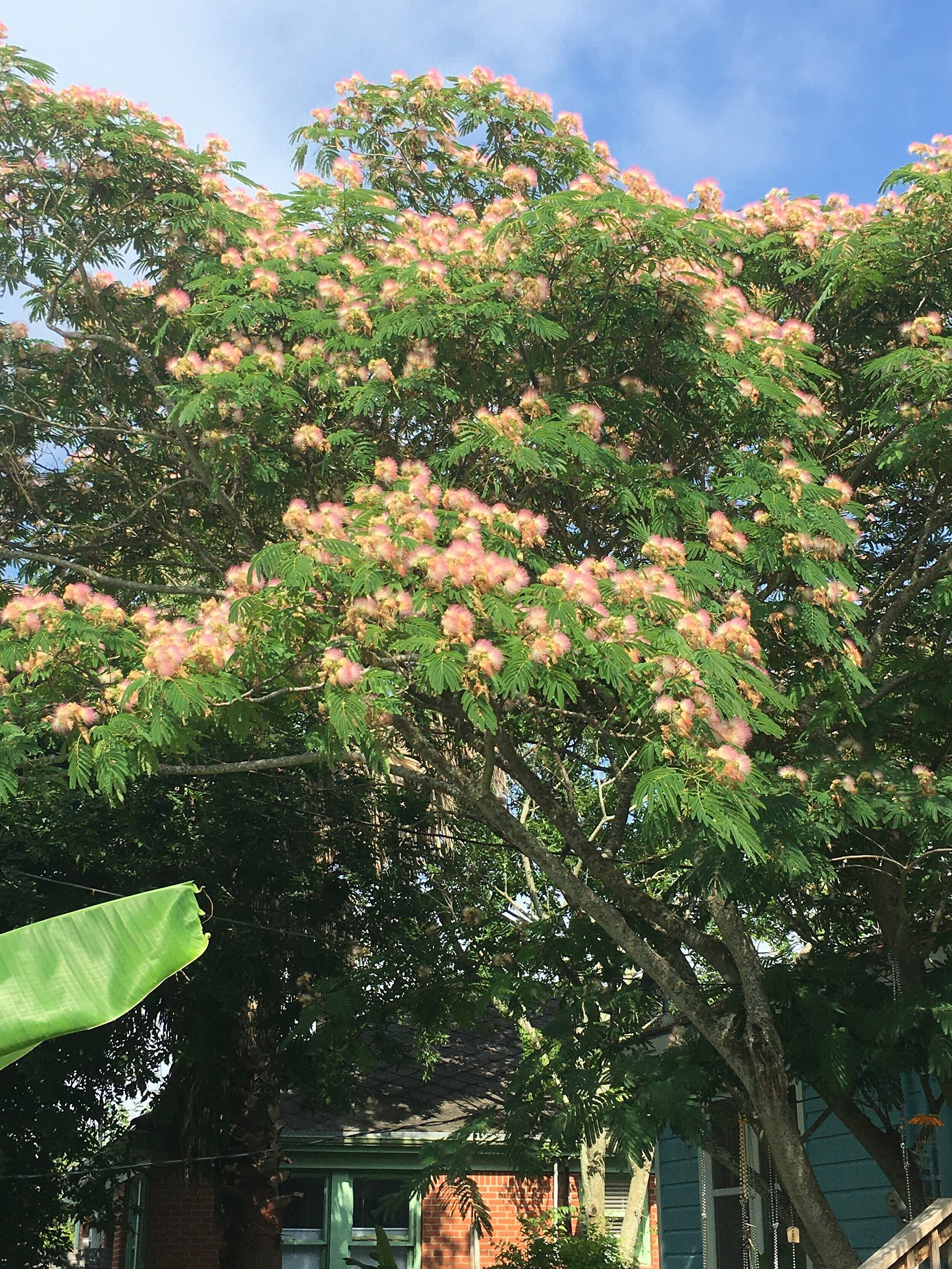Mimosa
Tree Stories: Mimosa is Not Just a Beverage
If you search the internet for “mimosa” you will find many recipes for cocktails. That familiar orange juice-based concoction is more likely named for the yellow-flowering Australian Mimosa tree (Acacia dealbata) than for the pink blooming tree we know. There are many species of trees called Mimosa, all ornamentals with fragrant blossoms. Common plant names can be confusing.
Here in Galveston, we have plenty of the feathery Mimosas most common in Texas, also known as Persian Silk Tree (Albizia julibrissin). You may have noticed their blooms recently in your neighborhood. They are attractive small trees with a graceful, delicate appearance and a wide, flat crown that provides dappled shade. Graceful fern-like foliage has leaves that close at night and during rainy periods. Fragrant and showy pink flowers appear in early summer and are a favorite of pollinators like bees and butterflies. The blossoms look like silky threads and have an intoxicating scent. Mimosas are fast growers that like full sun but can accept partial shade, handle cold weather, and even tolerate some drought.
This large member of the pea family (Fabaceae) is native to tropical and subtropical areas throughout the world. It originated in Asia, was first cultivated in the US in1745, and has been a popular landscape tree ever since. The seeds spread easily with wind and water. It has escaped into abandoned lots, fencerows, and fields and is naturalized throughout much of the southeastern US. Like many successful exotics, it can grow in a wide range of soil conditions.
Mimosas have several uses in addition to being attractive in the landscape. Pollinators love the flowers. The wood has been used to make furniture. The bark is prescribed in Chinese medicine as a treatment for depression, insomnia, and skin disorders. There are claims that young leaves of the plant are edible. But please read on.
That was the good news. Now for the bad news.
While Mimosas may have edible parts, several sources report that the pods and seeds contain alkaloids that are toxic and poisonous. Do not allow children or pets to put the seedpods or the seeds into their mouths, and do not allow grazing animals to feast on the tree.
This tree is listed in the Invasive Plant Atlas of the US as a serious environmental pest. Seeds spread widely and can sprout after years of dormancy. The Mimosa takes advantage of disturbed areas and has become a major problem along riverbeds and in open areas where it displaces native trees and shrubs.
Mimosas grow rapidly but are short-lived and have weak, brittle wood. They are highly susceptible to mimosa vascular wilt, a fungal disease that can spread to other plants. Even under good conditions they will generally live only 10 to 20 years.
In short, if you need an attractive small tree in your landscape, please consider an alternative from the many available natives, including Desert Willow, Eastern Redbud, Flowering Dogwood, and White Fringetree. You’ll be glad you did.
“Tree Stories” is an ongoing series of articles about outstanding Island trees, tree care, and tree issues. Margaret Canavan is a Galveston resident, a Galveston County Master Gardener, and a member of the Galveston Island Tree Conservancy Board.




